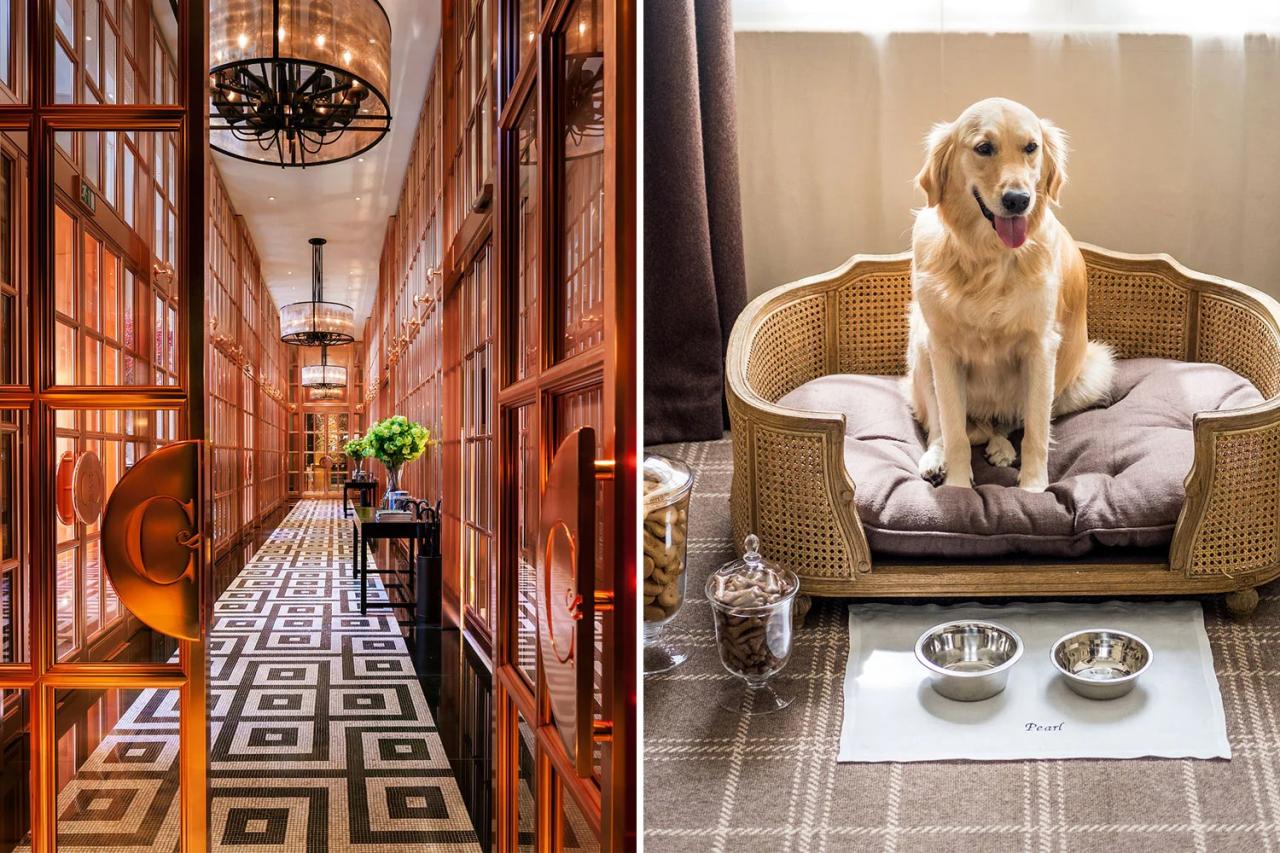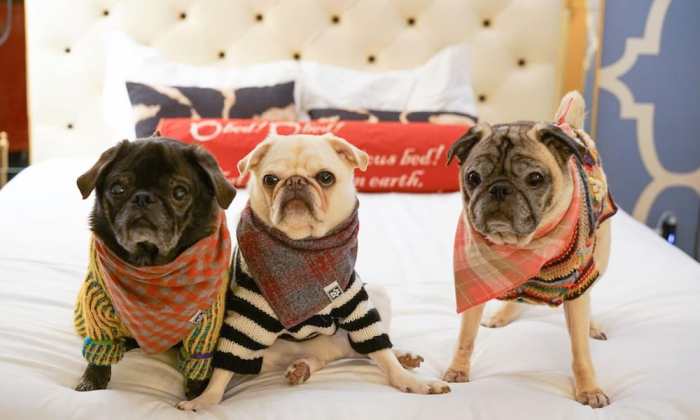
Planning a getaway with your furry friend? The search for pet-friendly accommodations can often feel like navigating a minefield of hidden fees. This guide cuts through the confusion, exploring the world of truly fee-free pet-friendly hotels. We’ll delve into defining “no fee,” uncovering potential hidden costs, and providing strategies to locate these elusive havens for you and your beloved pet.
Discover how to effectively utilize online booking tools, understand hotel policies, and ultimately, enjoy a stress-free vacation together.
We’ll examine both the positive and negative experiences reported by travelers, highlighting the importance of verifying policies directly with the hotel before booking. Furthermore, we’ll explore the broader implications of pet-friendly policies, comparing services and amenities offered by various establishments. Ultimately, our aim is to empower you with the knowledge to confidently book a truly fee-free, enjoyable stay for both you and your pet.
Reviewing Pet-Friendly Hotel Experiences
Understanding the realities of “no pet fee” policies at hotels requires careful examination of guest experiences. While attractive, the absence of a fee doesn’t guarantee a consistently positive experience for pet owners and their companions. Reviews across various booking platforms offer valuable insights into both the successes and shortcomings of these policies.
Positive and Negative Pet-Friendly Hotel Reviews
Many positive reviews highlight the convenience and welcome offered by hotels genuinely embracing pet-friendly policies without additional charges. For example, a review on Booking.com praised the “amazing staff” at a small boutique hotel in Vermont, specifically mentioning how accommodating they were to their Golden Retriever. The reviewer noted the availability of water bowls and waste bags, and the overall welcoming atmosphere for both human and canine guests.
In contrast, negative reviews often cite a lack of attention to detail. One TripAdvisor review criticized a larger chain hotel in California, despite their advertised “no pet fee” policy, for a lack of designated pet relief areas and a noticeable lack of cleanliness in areas frequented by dogs. The reviewer felt the hotel’s advertising was misleading, as the overall experience felt more like an afterthought rather than a genuine welcome for pet owners.
Another example from Expedia featured a guest complaining about a lack of communication regarding pet policies, with rules only being revealed upon arrival, creating an uncomfortable start to the stay.
Comparative Analysis of User Reviews Across Platforms
Analyzing reviews across Booking.com, TripAdvisor, Expedia, and other platforms reveals common themes. Hotels consistently praised for their pet-friendly amenities often feature details like readily available waste bags, designated pet areas (with adequate cleaning), and welcoming staff who actively engage with pet guests. Negative reviews, conversely, frequently point to a lack of cleanliness, insufficient space for pets, or inconsistent application of the “no pet fee” policy (sometimes leading to unexpected charges).
Inconsistencies in the quality of experience often appear more pronounced in larger hotel chains compared to smaller, independently owned establishments, suggesting a possible correlation between size and the level of personalized attention given to pet guests.
Importance of Verifying Pet Policies Directly with the Hotel
Before booking a hotel advertising a “no pet fee” policy, directly contacting the hotel is crucial. This step allows for clarification on specific pet policies, including size restrictions, breed restrictions, any additional rules or guidelines (such as leash requirements within the hotel), and confirmation of the absence of hidden fees or charges. Many reviews highlight instances where advertised policies were inaccurate or incomplete, leading to unexpected expenses or disappointing experiences.
A simple phone call or email can save considerable stress and ensure a more positive stay for both pet and owner. Relying solely on online booking platforms for this information is risky; a direct conversation with the hotel establishes clear expectations and reduces the chance of unpleasant surprises.
Understanding Pet-Friendly Hotel Policies

Navigating the world of pet-friendly hotels requires a clear understanding of their policies. These policies, while designed to ensure a pleasant stay for both pet owners and other guests, can sometimes be complex and contain clauses that might lead to misunderstandings. Familiarizing yourself with common elements and potential pitfalls will help ensure a smooth and enjoyable trip for you and your furry friend.Pet-friendly hotel policies typically include clauses addressing several key areas.
These policies aim to balance the welcome of pets with the need to maintain a comfortable environment for all guests. Understanding these aspects is crucial for avoiding unexpected charges or inconveniences.
Common Clauses in Pet Policies
Pet policies often specify permitted pet types, size and weight restrictions (e.g., limiting the number of pets or excluding certain breeds like pit bulls), and potential additional fees (even if advertised as “no fee,” there might be cleaning fees or damage deposits). They may also detail areas where pets are allowed or restricted (e.g., specifying that pets are not allowed in dining areas or certain hotel facilities).
Furthermore, many policies stipulate that pets must be kept on a leash or in a carrier at all times within the hotel, and require owners to clean up after their pets. Finally, policies often state that the hotel reserves the right to charge for any damages caused by the pet. For example, a policy might specify a maximum of two dogs under 50 pounds, prohibit aggressive breeds, and require a $50 refundable damage deposit.
Potential Areas of Misunderstanding
One common area of misunderstanding is the definition of “pet.” Some policies might exclude certain animals, such as reptiles or birds, even if they are well-behaved and pose no threat. Another source of confusion arises from vague or ambiguous language concerning pet size and weight restrictions. A policy stating “small to medium-sized dogs” might be interpreted differently by different individuals, leading to disputes upon arrival.
Finally, the terms and conditions related to damage liability can be unclear, leaving pet owners uncertain about their responsibility for any damage their pet may cause. For instance, a seemingly minor scratch on furniture could lead to a significant charge if the policy isn’t explicitly clear about the pet owner’s liability.
Questions to Ask Before Booking
Before confirming your reservation, clarifying certain points with the hotel is crucial. This proactive approach will prevent unpleasant surprises during your stay.
- What specific breeds or types of pets are allowed?
- Are there any weight or size restrictions?
- Are there any additional fees associated with bringing a pet (cleaning fees, damage deposits)?
- Are there any restrictions on where pets are allowed within the hotel (e.g., common areas, restaurants)?
- What is the hotel’s policy regarding pet behavior and cleanup?
- What is the hotel’s procedure in case of pet-related damage?
- What is the hotel’s cancellation policy if a pet is involved?
Illustrating Pet-Friendly Hotel Features

Creating a truly pet-friendly hotel experience requires careful consideration of both the pet’s and owner’s needs. The ideal pet-friendly hotel goes beyond simply allowing animals; it actively incorporates features designed to enhance comfort and safety for all guests.Pet-friendly hotel rooms should be designed with durable, easy-to-clean materials. This is crucial for managing potential messes and maintaining hygiene.
Ideal Pet-Friendly Hotel Room Layout and Features
The ideal pet-friendly room features easy-to-clean flooring, such as tile or sealed hardwood, minimizing the impact of pet accidents. Furniture should be sturdy and pet-resistant, perhaps with washable slipcovers. A designated pet area, perhaps a corner with a comfortable bed and water bowl, creates a sense of space for the animal. Outdoor access, whether a small patio or a nearby grassy area, is a significant benefit, allowing for easy potty breaks and exercise.
The room should also be well-ventilated to prevent odors and provide fresh air. Ideally, there would be readily available pet amenities, such as waste disposal bags and perhaps even a small selection of pet treats.
A Typical Pet Owner Arrival Scenario
Upon arrival, the pet owner approaches the reception desk, where a friendly staff member greets them. The owner informs the staff that they are traveling with a dog (or cat, etc.). The staff member confirms the reservation details, noting the pet’s presence and breed. They may offer a pet welcome package containing a bowl, a treat, and information on nearby pet-friendly parks or walking routes.
The staff may also offer guidance on the hotel’s pet policies, perhaps highlighting areas where pets are permitted or restricted. The owner and pet are then escorted to their room, with the staff member ensuring a smooth transition and answering any questions the owner may have.
Potential Hazards and Mitigation Strategies
Several potential hazards exist within a hotel room that could harm a pet. These include electrical cords, which could be chewed on; cleaning products, which could be ingested; small objects, which could be swallowed; and certain plants, which may be toxic. Mitigation strategies involve securing electrical cords out of reach, storing cleaning supplies in locked cabinets, removing small, potentially dangerous items, and avoiding the presence of toxic plants in the room.
Clear signage alerting owners to potential hazards would also be beneficial. Furthermore, the hotel should provide readily available contact information for local veterinary services in case of an emergency.
Finding a pet-friendly hotel without extra charges requires diligence, but the reward is a relaxing vacation with your furry companion without the added stress of unexpected fees. By understanding the nuances of “no fee” policies, utilizing effective search strategies, and verifying details directly with hotels, you can confidently plan your next trip. Remember to always check reviews and prioritize hotels that prioritize both your comfort and your pet’s well-being.
Happy travels!
Detailed FAQs
What constitutes a “hidden fee” in pet-friendly hotels?
Hidden fees can include extra cleaning charges beyond standard cleaning, fees for pet damage not clearly Artikeld, or unexpected charges for “pet amenities” that are not explicitly stated upfront.
Are there any breed restrictions in “no fee” hotels?
While many aim for “no fee,” some hotels may still have breed restrictions, particularly for larger or perceived “aggressive” breeds. Always check the specific hotel’s policy.
What should I do if a hotel charges a pet fee after claiming to be “no fee”?
Contact the hotel immediately to dispute the charge. Provide evidence of their advertised “no fee” policy. If unsuccessful, consider contacting your credit card company or a consumer protection agency.
How can I ensure my pet’s safety in a hotel room?
Inspect the room for potential hazards like exposed electrical wires, cleaning supplies, or small objects your pet could swallow. Keep your pet leashed or crated when unsupervised.




